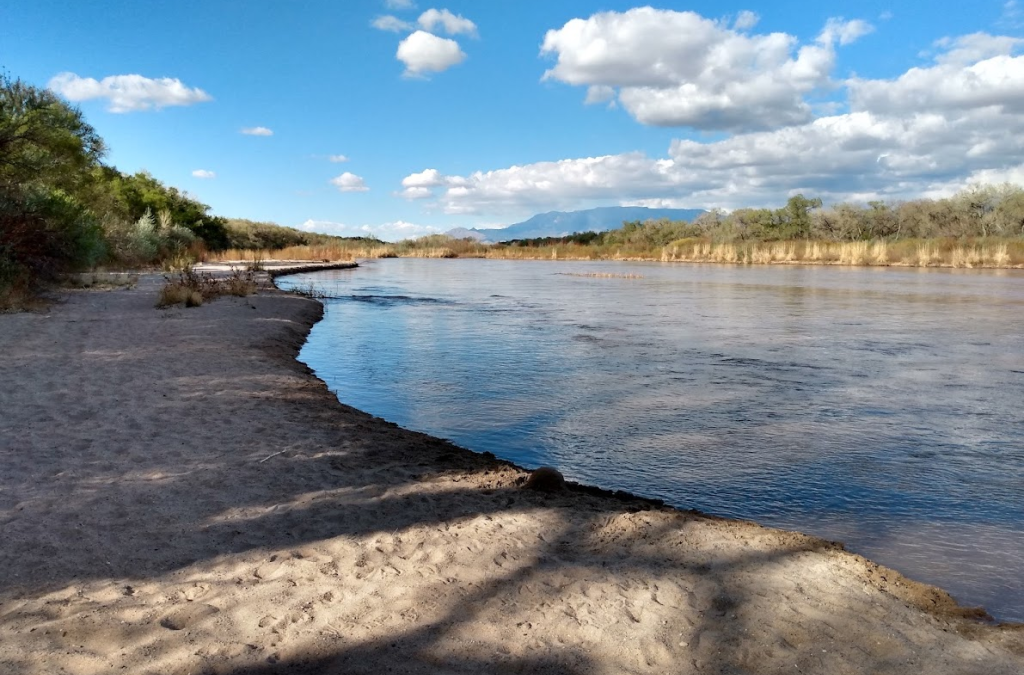On March 29th, 2022, the Institute for American Indian Research at the University of New Mexico hosted an online panel discussion on Water and Indigenous Relations. This panel discussion presented an enlightening challenge to the dominant discourse of how water is viewed in the western United States. It offered viewpoints and information that should be taken into account by all water managers as we face the increased threat of drought and significant weather events.
The panel discussion was led by Melanie K. Yazzie (Diné, Assistant Professor of American Indian Studies, University of Minnesota) and featured panelists:
- Julia Bernal (Sandia Pueblo/Yuchi), Director, Pueblo Action Alliance, MA student UNM Community & Regional Planning
- Andrew Curley (Diné), Assistant Professor of Geography, University of Arizona
- Michelle Daigle (Mushkegowuk), Assistant Professor of Geography, University of Toronto
- Teresa Montoya (Diné), Assistant Professor of Anthropology, University of Chicago
All panelists offered diverse insight based both on their scholarly research and from their lived experiences as Indigenous persons and scholars. They offered alternative ways of understanding and measuring water and presented ideas challenging how water is currently allocated and viewed as a standardized commodity.
For water managers in the US, it is important to understand that the now dominant discourse of how water is measured and allocated is not the only way. Currently, in most of the western US, water is allocated by prior appropriation, meaning that whoever can prove that they first started using that water for a beneficial purpose historically, has a right to use that water before others who started using water from that source at a later date. In choosing this approach, water has been turned from a necessity into a commodity that can be exchanged for a price, which can be a very destructive ideology. In addition, water makes for a poor commodity due to the nature of how it moves through the environment and differences in water quality between water sources. Instead of allocating by prior appropriation, a simple alternative that was presented, would be to allocate water by crop or community need. In this manner, water scarcity could be addressed by ensuring those that need the water the most, would receive it. This would also be a better fit with many Indigenous traditions, where water is a unique living entity that has its own fundamental rights and cannot be separated from the land and its people.
One example where understanding different ways of viewing water is relevant, is the conversation around drinking water system partnership. Drinking water systems across the US face many challenges including a lack of technical, managerial, and financial capacity to operate effectively and safely. System partnership is often discussed as a solution to this challenge by the regional sharing of resources to achieve economies of scale. As different stakeholders form these partnerships, they may have different ways of viewing water, have different historical uses for water, and have different definitions of when water is a necessity. To come to a consensus and to have an effective partnership, it is important for stakeholders to be open to alternative ways of viewing and allocating regional shared resources, including water.
In addition to understanding the various ways of viewing and using water, with increased threats of drought in many parts of the US and an increase in significant weather events, it can be increasingly advantageous for water managers to question their own assumptions and the dominant discourse of how water is viewed. In the western US, there is no doubt that water demand exceeds supply. If more managers and decision makers start viewing water as a dynamic living entity, that should be shared in a more respectful way, it could alleviate some of the tension and result in solutions that lead to a more equitable and just allocation of water. While the allocation of water is a complex topic with many considerations, it is worth considering other ways of thinking about water especially considering the extreme drought impacting much of the southwestern U.S.

Rio Grande near Albuquerque, NM (occupied ancestral Pueblo land). Photo by Tucker Colvin
Written by: Tucker Colvin, Research Scientist at the Southwest Environmental Finance Center


Recent Comments